

Exploring our past to sort out myth from reality
Share this Page on
Facebook or Twitter

These are the voyages of the TimeShip Anachron.
Our Mission: To boldly explore the past, dispelling
mythinformation and mythconceptions
of American History along the way.
 Visit us on Facebook
Visit us on Facebook
Meet MythAmerica LITE
Happy (Face) History
Images of faces with a happy expression have been around just about forever.
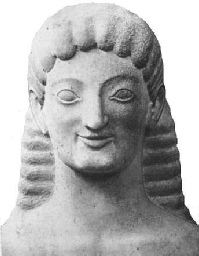
But if I write that I saw a “happy-
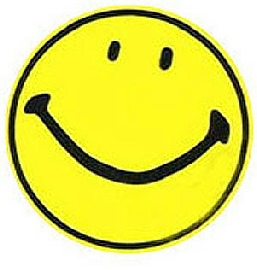
THIS is what will pop into virtually everyone’s mind who reads the term.
So the question is, as the old song put it, “How long has this been going on?” If you are under 40, you may assume that the ubiquitous, iconic “happy-
Surely second grade teachers in your grandparents’ day scribbled such happy faces next to the A or B+ in the margin of a math paper, even if “stickers” hadn’t been invented yet.
No, they didn’t. And therein lies a happy-
My earliest memories of the canary yellow, minimalist happy-
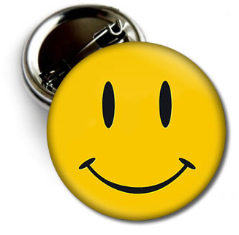
It had started out with just happy-
But once merchandisers realized the power of the image, they rendered it in a thousand different ways, in print and 3-
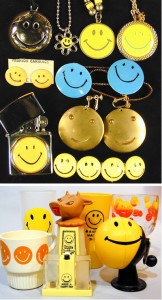
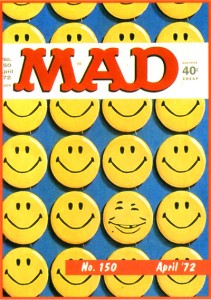
You knew it had “arrived” when it even showed up on the cover of Mad Magazine.
So where did Mr. Oppy Cee come from?
In 1963, the State Mutual Life Assurance Company in Worcester, Massachusetts, had a morale problem. A recent company merger had left employees on edge and glum. So local free-
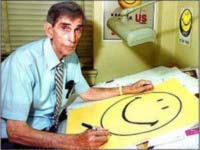
Harvey’s first draft was simply a cheerful yellow circle with a smiling mouth. But when he turned it upside down, he realized that turned it into a frown. Not wanting to accidentally give a wrong impression, he added two dots for eyes to make sure the smile stayed smiling.
In a 1996 interview, Harvey commented about his original Happy Face, “There are two ways to go about it. You can take a compass and draw a perfect circle and make two perfect eyes as neat as can be. Or you can do it freehand and have some fun with it. Like I did. Give it character.”
And that’s what separates Harvey Ball’s Original, Classic Smiley Face from all the Smiley-
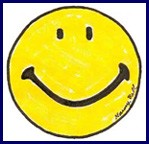
What makes a classic happy-
Harvey’s character-
In addition the Harvey Happy Face doesn’t have a mouth that is an arc of a circle—it is a more oval curve. The HHF has a much bigger “chin” than most other happy faces—the mouth is significantly higher on the circle than in most cookie-
It’s impossible to miss the Harvey Happy Face in a Police Line-

Sadly, the standardized, geometrically perfect happy-
Or would be if it wasn’t for the Harvey Ball World Smile Foundation!
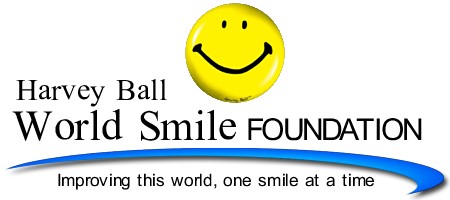
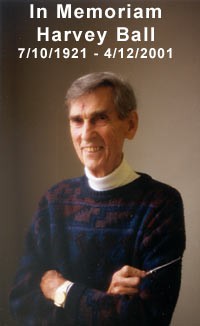
Before his death at age 79 in 2001, Harvey Ball started the World Smile Corporation. The corporation sponsors an annual World Smile Day, and licenses goods with the Harvey Ball Happy Face on them. Sales raise money for the non-
World Smile Day has its own website:
As is well known by now throughout the world Harvey Ball, a commercial artist from Worcester, Massachusetts created the smiley face in 1963. That image went on to become the most recognizable symbol of good will and good cheer on the planet.
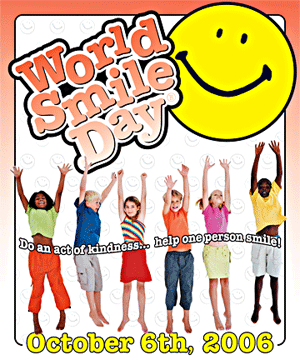
As the years passed Harvey Ball became concerned about the over-
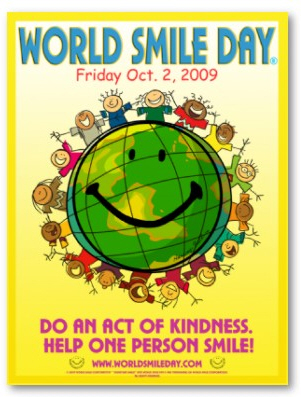
After Harvey died in 2001, the Harvey Ball World Smile Foundation was created to honor his name and memory. The Foundation continues as the official sponsor of World Smile Day® each year.
This website was created to provide information about World Smile Day®, Harvey Ball and Smiley. Browse the archives to learn more about past World Smile Day® events, Smiley and his creator -
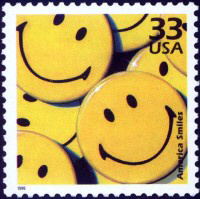
For more Happy (Face) Talk, see the fascinating article by graphics art guru Gene Cable, who married a Happy Face junky, on the CreativePro.com site:
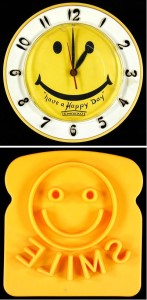
And don't forget ... even YOU can change the world...
One smile at a time.
~~~~~
If you’ve enjoyed this little history
of Harvey and his happy-face,
you might enjoy the article about Burma Shave,
The Big Brush Off.
you might enjoy the article about Burma Shave,
The Big Brush Off.